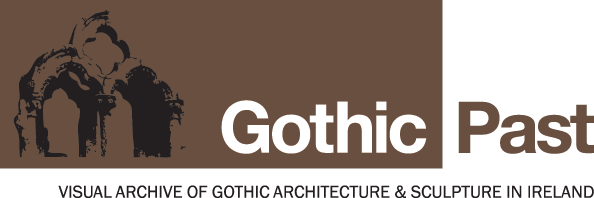Social Networking in Medieval Ireland
Description
In this exhibition animated word nodes illustrate the links between patrons, masons and Gothic architecture and sculpture in medieval Ireland.
These were created by isolating set metadata terms in the Rae Collection to see how monuments with these key terms are interconnected by metadata, these terms were "Piers Butler, Margaret FitzGerald, Ormond and O'Tunney". They occur often in the Rae collection because one of Rae’s major research areas were a large number of late medieval tombs in Kilkenny and Tipperary. His work on the tombs is contained in two articles published in 1970 and 71.
As a result of his study Rae arranged to tombs to fit in with the ouvres of two sculptural workshops, the Ormond school and the O’Tunney atelier, with an article detailing the output of each. This division has defined the subject for succeeding generations of scholars.
Recurring words in the Rae collection are th Earl of Ormond, and then the patrons of different tombs created by the O’Tunney workshop. I suggest that the tombs so carefully documented in Rae’s images are the permanent and overt expression of the Earl of Ormond’s social network in early sixteenth-century Kilkenny ... read on to hear why.
Credits
Danielle O'Donovan
Sections
Butler, Fitzgerald, Ormond, O'Tunney
The earls of Ormond were the dominant political and martial force in the South East of Ireland during the high and late middle ages. In the 1505, last remaining male member of main line, Thomas Butler, died without male issue. A tussle ensued for the title between a junior branch of the family based in Kilkenny and Thomas Butler’s daughters and their husbands – who were prominent members of the Tudor Court in London. (If I drop their name, Boleyn, you’ll understand just what the Kilkenny cousins were up against!)
The Reign of Henry VIII is a period during which political power was shifting, and the reach of the monarch was being felt 'outside the Pale'. Ormond, though not particualry marginal, was an area where this reach was being felt. The junior Butler line, based in Kilkenny and headed by Piers Butler and his wife Margaret FitzGerald, had much to prove if they were to convince the King that they were the fit and rightful heirs to the Ormond title. Furthermore, if Piers and Margaret were successful, others might benefit from their ascent to true nobility by being seen to be part of their ‘social network’.
Thus I strongly argue that the tombs which had so intrigued Edwin Rae are a kind of petrifaction of the ‘Social Network’ of early sixteenth century Kilkenny. A visualisation of how the data used to tag Rae’s images creates a picture not unlike that of my friends on Facebook, it shows how the tombs of the Ormond family and those of the O’Tunney atelier are interconnected. Thanks to the survival primary documents from Kilkenny at this period in the form of the Ormond Deeds and the work of the historian, David Edwards, it is possible to extrapolate the political a familial relationships that are mapped out for us here.
At the centre of this network are Piers Butler ‘the contender’ and his formidable wife, Margaret FitzGerald, who waged a joint campaign to have Piers claim to the Ormond title recognised. Cultural patronage played an important role here, and an important aspect of that patronage was what appears to be a bulk commission of tombs at Gowran (the Ormond family chapel) and St. Canice’s Cathedral) by sculptors Rae called ‘the Ormond School’.
The rest of the tombs radiating out here are those of Piers and Margaret’s family, allies and clients.
